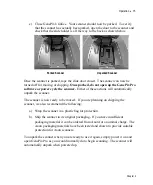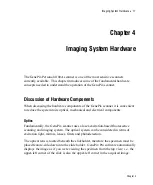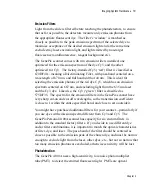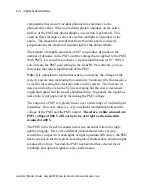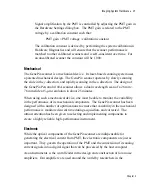
20
•
Imaging System Hardware
components that convert incident photons into electrons via the
photoelectric effect. When an incident photon impinges on the active
surface of the PMT (the photocathode), an electron is generated. This
electron flows through a series of electron multipliers (dynodes) to the
anode. The amount of current that flows from the anode is directly
proportional to the amount of incident light at the photocathode.
The amount of amplification that a PMT can produce depends on the
number of dynodes in the PMT, and the voltage
that is applied to the PMT.
With PMTs it is possible to achieve a signal amplification of 10
7
. When
you increase the PMT gain setting in the GenePix Pro software, you are
increasing the signal amplification of the PMT.
Note:
It is important to realize that when you increase the voltage of the
system, you are also increasing the sensitivity to non-specific fluorescence,
as well as increasing the electronic noise in the system. The increase in
noise can often be overcome by line averaging but the cost is decreased
acquisition speed and increased photobleaching. In general, the signal-to-
noise ratio is not improved by increasing the PMT voltage.
The output of a PMT is typically linear over a wide range of incident light
intensities. However, there is a very non-linear relationship between the
voltage of the PMT and the PMT output.
Therefore, a slide scanned at a
PMT voltage of 800 V will
not
be twice as bright as the same slide
scanned at 400 V.
The PMT in the GenePix scanner meets two essential criteria for high-
quality imaging. First, since different photocathodes have varying
sensitivities to specific wavelengths of light (quantum efficiency), the PMT
has been chosen for the typical wavelengths of fluorescence emission light
produced by arrays. Second, the PMT has been further selected for its
reliability and optimal signal-to-noise performance.
GenePix 4100A User's Guide, Copyright 2005 Axon Instruments / Molecular Devices, Corp.










